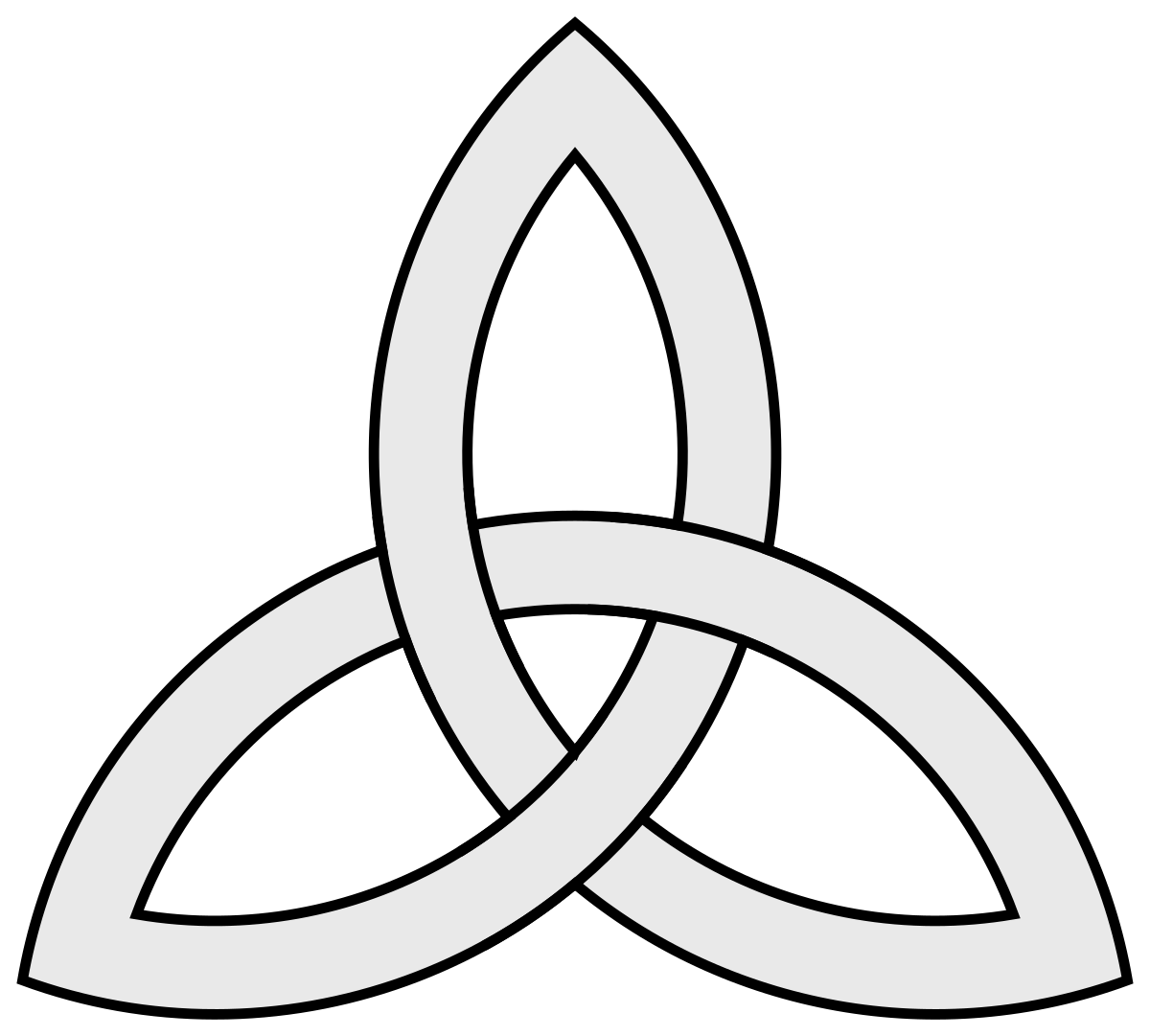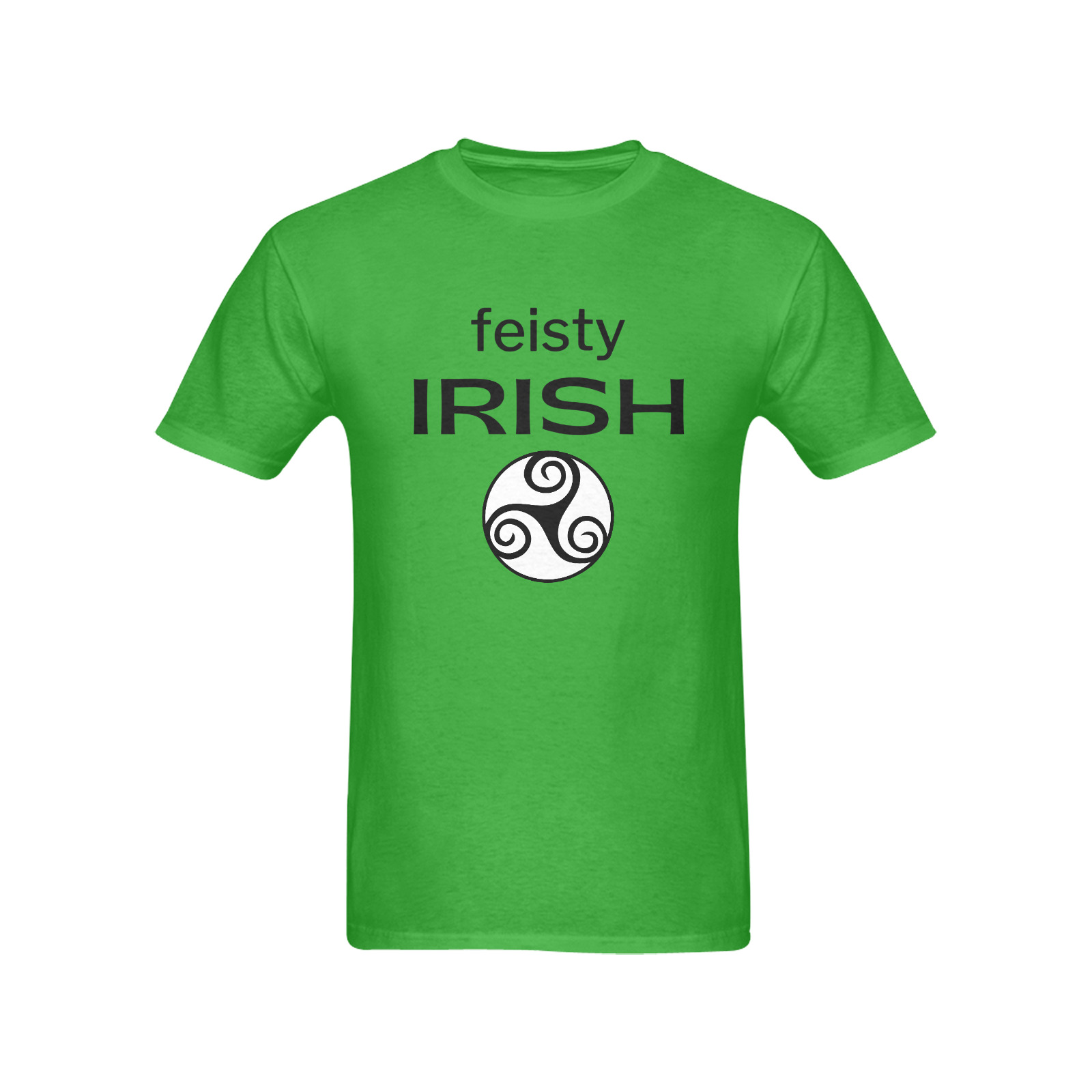The Celtic Trinity Knot Meaning: Ancient Symbol of Eternity, Love, and Spirituality

In the rich tapestry of Celtic heritage, few symbols are as instantly recognizable and deeply meaningful as the Celtic Trinity Knot. Also known as the Triquetra (derived from the Latin word “triquetrus” meaning “three-cornered”), this ancient emblem has transcended its origins to become a powerful representation of eternity, unity, and spiritual interconnectedness. For those proudly embracing their Irish ancestry or simply appreciating Celtic artistry, understanding the profound significance of this symbol adds depth to its aesthetic appeal.
Historical Origins of the Celtic Trinity Knot
The exact origins of the Trinity Knot are somewhat shrouded in mystery, but archaeological evidence suggests its presence in Celtic culture dates back to at least the 7th century CE. The symbol appears in illuminated manuscripts like the iconic Book of Kells, stone carvings on ancient Celtic crosses, and various metalwork artifacts discovered across Ireland, Scotland, and Wales.
Interestingly, similar three-cornered designs have been found in other cultures, including Norse Viking artifacts and even Japanese emblems, suggesting that the basic form may have developed independently in different regions. However, it was in Celtic art that the Triquetra flourished and evolved into the intricate interlaced design we recognize today.
The earliest documented Trinity Knots were purely decorative with no specific religious significance attached. It was only later, with the spread of Christianity across Celtic territories, that the symbol gained its spiritual associations.
The Trinity Knot’s Spiritual Meaning Through History
Pre-Christian Celtic Interpretations

Before Christianity reached the Celtic lands, the Triquetra held various meanings central to Celtic pagan belief systems:
- The Triple Goddess – Many scholars believe the three interlocking parts represented the Maiden, Mother, and Crone aspects of the Celtic triple goddess, symbolizing the feminine life cycle.
- Life, Death, and Rebirth – The eternal, unbroken nature of the knot symbolized the continuous cycle of existence, with no beginning and no end.
- Natural Elements – Some interpretations suggest it represented the three realms of earth, sea, and sky, or the natural elements of earth, air, and water.
- Mind, Body, Spirit – The interconnectedness of the three parts was seen as representing the unity of human existence: physical, mental, and spiritual.
As one of the most beloved Celtic symbols, the Trinity Knot embodied the Celtic fascination with trinities and triads, which appeared frequently in their mythology and cultural expressions.
Christian Symbolism
With the arrival of Christianity in Celtic regions around the 5th century, the Trinity Knot was brilliantly repurposed by early Christian missionaries, particularly St. Patrick. Rather than eliminating or suppressing pagan symbols, they incorporated them into Christian teaching:
- The Holy Trinity – The three interlocked parts came to represent the Father, Son, and Holy Spirit—three distinct persons in one God.
- Eternal Life – The unbroken, continuous line symbolized God’s eternal nature and the promise of everlasting life.
- Divine Love – The interwoven pattern represented the indivisible nature of God’s love.
This adaptation demonstrates the remarkable cultural synthesis that occurred during the Christianization of Celtic territories, with the Trinity Knot becoming a perfect visual metaphor for complex theological concepts.
Modern Interpretations and Uses of the Trinity Knot

Today, the Trinity Knot continues to evolve in its significance while remaining deeply connected to its Celtic roots. In contemporary culture, it has gained additional meanings:
Symbol of Love and Relationship
The Trinity Knot has become a popular symbol for expressing commitment in relationships. Its unbroken, interwoven pattern represents:
- Eternal Love – The endless knot symbolizes a love that has no beginning or end.
- Unity in Marriage – The three interlocked parts can represent husband, wife, and God (or the relationship itself).
- Family Bonds – Some interpret it as symbolizing the connection between parents and child, or simply the unbreakable nature of family ties.
This interpretation has made Trinity Knot jewelry particularly popular for wedding bands, engagement rings, and anniversary gifts. The symbol perfectly captures the concept of “three becoming one” in a relationship.
Cultural Identity and Heritage
For many people of Irish, Scottish, or Celtic descent, the Trinity Knot serves as a powerful expression of cultural identity and heritage. It appears on:
- Jewelry and Accessories – From pendants and rings to bracelets and earrings, the Trinity Knot is a fashionable way to display Celtic pride.
- Tattoos – As body art, the Trinity Knot allows for personal expression while honoring ancestral connections. Its versatility makes it suitable for various body placements and design adaptations.
- Home Décor – Wall art, tapestries, dishware, and furniture featuring the Trinity Knot bring Celtic aesthetics into modern homes.
- Clothing – T-shirts, sweatshirts, and other apparel items with Trinity Knot designs have become increasingly popular ways to express Celtic heritage.
The symbol’s visual appeal transcends cultural boundaries, making it appreciated even by those without Celtic ancestry who simply admire its aesthetic and philosophical depth.
Spiritual and Personal Growth
In modern spiritual practices, both Christian and non-denominational, the Trinity Knot is often used as a meditation focus or personal talisman representing:
- Mind-Body-Spirit Connection – The three interconnected parts remind us of the importance of balance and wholeness in life.
- Protection – Some believe wearing or displaying the Trinity Knot offers spiritual protection against negative energies.
- Guidance – It can serve as a reminder of one’s spiritual journey and the interconnectedness of all things.
Whether viewed through a religious lens or as a secular philosophical concept, the Trinity Knot continues to inspire contemplation about the nature of existence and our place in the universe.
The Trinity Knot in Art and Design

The artistic versatility of the Trinity Knot has ensured its enduring popularity across centuries. Its elegant simplicity combined with profound symbolism makes it adaptable to various art forms and design contexts:
Traditional Celtic Art
In traditional Celtic art, the Trinity Knot appears alongside other knot patterns, spirals, and zoomorphic designs (animal forms). What distinguishes the Triquetra is its perfect balance and symmetry, making it a focal point in many compositions.
The continuous line technique used in Celtic knotwork represents the Celtic worldview of interconnectedness—where all of life is seen as an unbroken flow rather than separate fragments. This philosophy resonates strongly with modern holistic perspectives.
Contemporary Design Applications
Contemporary designers continue to find inspiration in the Trinity Knot:
- Graphic Design – The clean lines and symmetry of the Trinity Knot work beautifully in logos, brand identities, and digital media.
- Architectural Elements – From carved stone features to wrought iron work, the Trinity Knot adds Celtic character to buildings and landscapes.
- Fashion – Beyond Celtic t-shirts and jewelry, the Trinity Knot pattern appears in fabric designs, embroidery, and accessories.
- Tattoo Art – Tattoo artists often create personalized versions, combining the Trinity Knot with other meaningful symbols or incorporating color and texture to enhance its visual impact.
The enduring appeal of the Trinity Knot in design speaks to both its aesthetic versatility and its ability to convey complex concepts through simple visual means.
Trinity Knot Variations and Related Celtic Knots
While the basic Trinity Knot design is instantly recognizable, several variations and related knots exist within the broader Celtic knotwork tradition:
Trinity Knot with Circle
One popular variation includes a circle interwoven with the three-cornered knot. The circle represents eternity, wholeness, and the cyclic nature of life, adding another layer of meaning to the symbol.
Heart-Shaped Trinity Knot
A modern adaptation blends the Trinity Knot with a heart shape, explicitly emphasizing its association with love and relationship. This variation is particularly popular in wedding jewelry and romantic gifts.
Related Celtic Knots
Other Celtic knots that share symbolic connections with the Trinity Knot include:
- Quaternary Knot – Similar to the Trinity Knot but with four interlocked corners, representing the four elements, seasons, or cardinal directions.
- Celtic Love Knot – A simplified knot design specifically symbolizing the bond between two people.
- Celtic Shield Knot – A protective symbol with four corners, used as a talisman against negative energies.
Understanding these variations and related symbols helps appreciate the rich complexity of Celtic knotwork tradition and its adaptability to diverse meanings across time.
Choosing and Wearing Trinity Knot Jewelry

For those drawn to the beauty and symbolism of the Trinity Knot, wearing it as jewelry offers a personal connection to its meaning. When selecting Trinity Knot jewelry:
Materials and Craftsmanship
Traditional materials for Celtic jewelry include:
- Sterling Silver – The most popular choice, offering durability and a lustrous finish that highlights the intricate details of the knot.
- Gold – Available in yellow, white, or rose gold, adding warmth and prestige to the design.
- Mixed Metals – Some designs combine silver and gold elements for visual contrast.
- Gemstone Accents – Emeralds (representing Ireland), gemstones in birthstone colors, or crystals can enhance the personal significance.
Authentic Celtic jewelry typically features hand-finished details and high-quality craftsmanship that honors the ancient traditions of Celtic metalwork.
Styles and Occasions
Trinity Knot jewelry comes in various styles suitable for different occasions:
- Everyday Wear – Simple pendants, stud earrings, or slim bands make the Trinity Knot accessible for daily use.
- Special Occasions – More elaborate designs with gemstone embellishments or combined with other Celtic symbols for milestone celebrations.
- Ceremonial Jewelry – Particularly significant for weddings, baptisms, or other spiritual ceremonies where its symbolic meaning enhances the event.
Whether chosen for its spiritual significance, cultural connection, or simply its aesthetic appeal, Trinity Knot jewelry serves as both adornment and meaningful talisman.
The Trinity Knot in Modern Popular Culture
The influence of the Trinity Knot extends well beyond traditional contexts, appearing throughout contemporary popular culture:
Film and Television
The Trinity Knot has appeared in various films and TV shows, especially those with Celtic, fantasy, or supernatural themes. Its visual distinctiveness makes it instantly recognizable as a symbol of ancient wisdom and mystical power.
Music and Literature
Many Celtic-inspired musical groups incorporate the Trinity Knot in their album artwork and merchandise. In literature, particularly fantasy and historical fiction genres, the symbol often appears as a magical emblem or cultural marker.
Digital Media and Gaming
The Trinity Knot frequently appears in video games, particularly those drawing on Celtic mythology or medieval settings. Its distinctive design makes it a popular choice for in-game magical symbols, faction emblems, or character tattoos.
This widespread cultural presence has introduced the Trinity Knot to audiences who might otherwise have no connection to Celtic heritage, further cementing its status as a globally recognized symbol.
Conclusion: The Enduring Legacy of the Celtic Trinity Knot
The Trinity Knot’s journey from ancient Celtic art to contemporary global symbol demonstrates the remarkable resilience and adaptability of meaningful cultural icons. Its ability to represent complex concepts of eternity, unity, and spiritual connection through elegant simplicity ensures its continued relevance in our modern world.
Whether worn as jewelry, displayed in home décor, etched as a tattoo, or simply appreciated for its aesthetic appeal, the Trinity Knot offers a tangible connection to Celtic heritage and wisdom. Its interwoven paths remind us that life’s most meaningful aspects—love, faith, and identity—are interconnected in ways that transcend time and cultural boundaries.
As we continue to seek symbols that provide both meaning and beauty in our lives, the Celtic Trinity Knot stands as a perfect example of how ancient wisdom can speak directly to contemporary hearts and minds. Its unbroken lines continue to tell a story of eternity, inviting each new generation to discover its depth and make it their own.
Ready to embrace your Celtic heritage? Explore our collection of authentic Celtic Trinity Knot jewelry, clothing, and accessories at Feisty Irish and carry this powerful ancient symbol with you every day.















